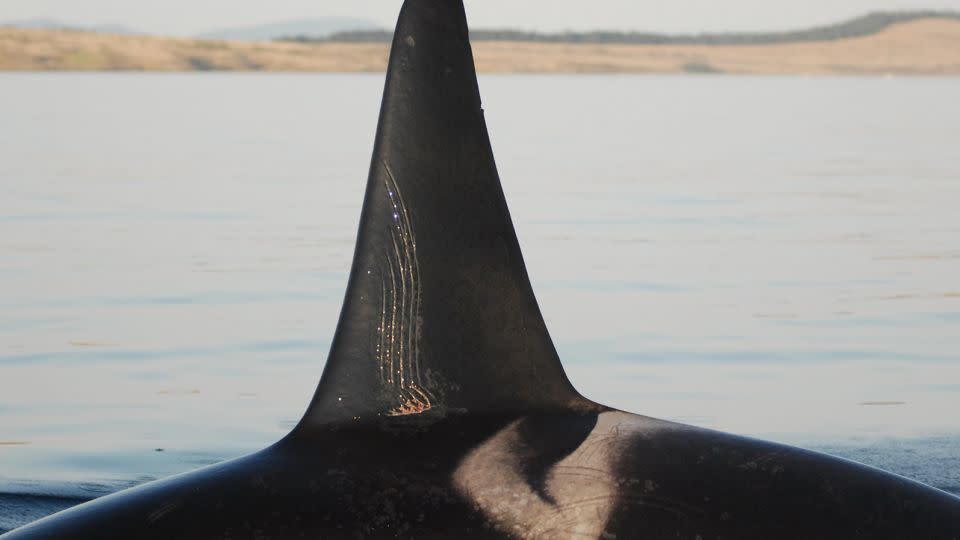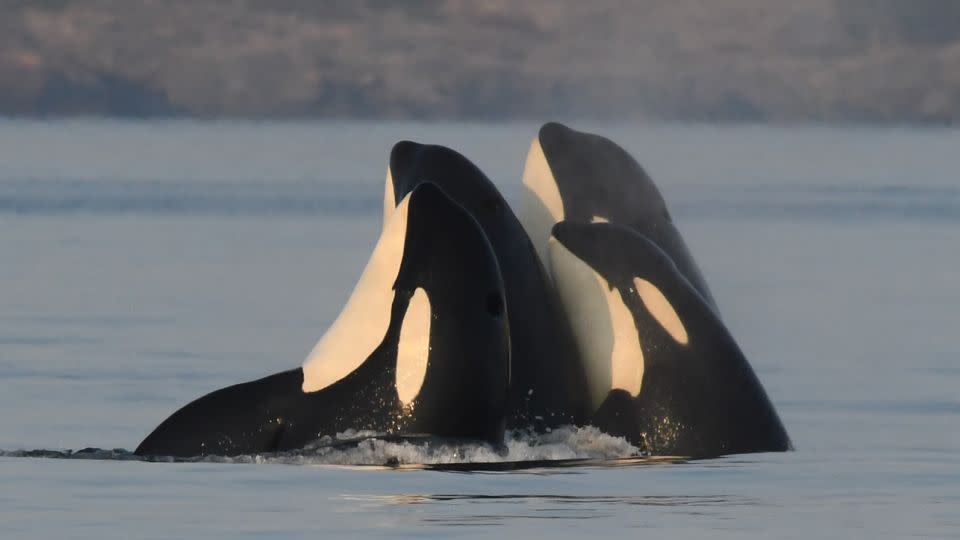How killer whale grannies spend their time postmenopause
Editor’s note: Sign up for CNN’s Wonder Theory science newsletter. Explore the universe with news on fascinating discoveries, scientific advancements and more.
Female orcas, like their human counterparts, live decades beyond their reproductive years.
Scientists are trying to untangle why. In doing so, researchers are aiming to uncover more clues to the evolutionary purpose of menopause — a rare phenomenon in the animal kingdom.
Earlier research has suggested that postmenopausal orcas are thought to boost the life chances of their offspring and grandchildren — known as the grandmother effect. The head of a killer whale pod shares her knowledge of the best hunting spots and more than half the fish she catches with her family members.
Now, according to a new study published Thursday in the journal Current Biology, these orca matriarchs, which can live up to 90 years, also like to spend their later years indulging in some helicopter parenting of their sons. Female orcas help their sons navigate the complexities of orca social life and protect them from fights with other killer whales.
Orca moms may intervene for sons
In a group of orcas, known as the Southern Resident population, that lives off the Pacific Northwest coast of North America, scientists studied “tooth rake marks” — the scarring left when one whale scrapes their teeth across the skin of another.
The research team found males had 35% fewer marks if their mother was present and had stopped breeding, according to the study’s analysis of data and images gathered by the Center for Whale Research in Friday Harbor, Washington. The center has been studying this critically endangered group of killer whales, which now number around 75, since 1976. Some 103 orcas were involved in the research due to births and deaths over the course of the study period.
Orcas have no natural predators — except humans — and the tooth marks on their skin can only be inflicted by other killer whales, either within social groups or when two pods meet.
“Tooth rake marks are indicators of physical social interactions in killer whales and are typically obtained through fighting or rough play,” said lead study author Charli Grimes, an animal behavior scientist at the Centre for Research in Animal Behaviour at the UK’s University of Exeter.

It was possible older females used their experience to help their sons in encounters with other whales, Grimes said. The team is collecting drone footage of the whales to better understand the behavior.
“We think that these females use their enhanced knowledge of other social groups that obviously comes with time (and) experience … to help their sons navigate the interaction — whether that is signaling to them vocally or behaviorally,” she said. “That’s one hypothesis of how they might be protecting them. Another one is that they involve themselves in a conflict if a fight looks risky (for their son).”
Protecting matrilineal lines
The researchers found no evidence that postmenopausal orcas — which can expect to live some 22 years on average after they stop reproducing — reduce the bite marks on their daughters. Nor did breeding mothers or grandmothers reduce the rate of these socially inflicted injuries in their offspring.
“We can’t say for sure why this changes after menopause, but one possibility is that ceasing breeding frees up time and energy for mothers to protect their sons,” Grimes said.

Why not protect orca daughters? Grimes said that it makes more evolutionary sense for the orca matriarchs to focus on their sons because they have more potential to pass on their mother’s genes — and in a way that doesn’t put any additional burden on the group.
“Males have the opportunity to mate with multiple females, and they do this outside of their own social group. When a male’s calf is born … then the cost of that calf lies with the other group,” she said.
Only humans and five species of toothed whales are known to experience menopause, the new study noted. However, an August 2021 study suggested that the grandmother effect may also occur in female giraffes, who live long beyond their reproductive years.
For more CNN news and newsletters create an account at CNN.com
